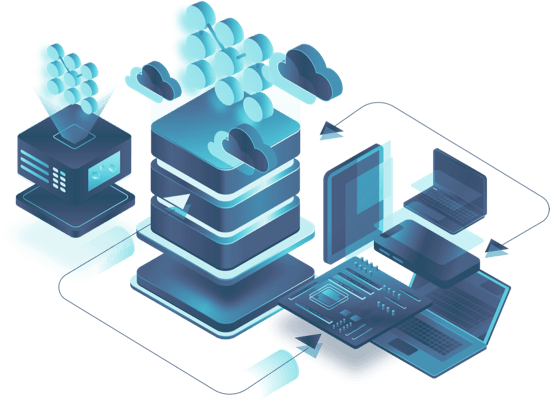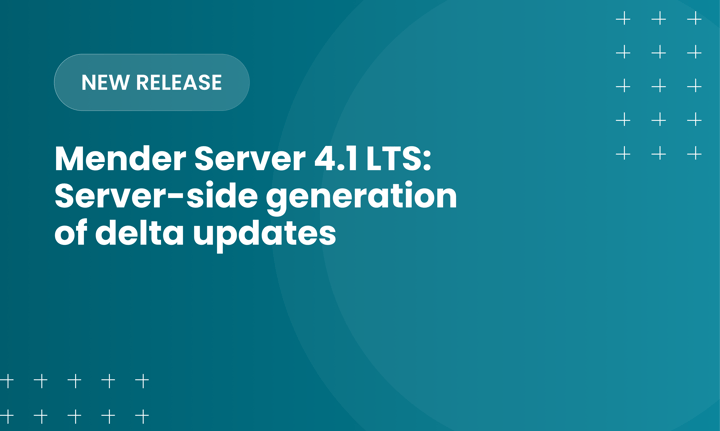With a lightweight architecture, local processing, and resource optimization, a real-time operating system (RTOS) is a common choice for OEMs across industries. Selecting the right RTOS is crucial for building efficient, future-proof, and secure embedded systems. Considerations, such as storage and processing capabilities, and long-term maintainability, can drastically affect the projection and success of new products.
With an open source heritage and philosophy derived from Linux, Zephyr RTOS continues to rise in the ranks as one of the preferred real-time operating systems (RTOS) for smart, connected products. The Zephyr Project reports an impressive membership base, including Volkswagen-owned CARIAD, and top contributing companies, Nordic Semiconductor, Intel, and NXP.
Offering a technology-based fit for broad industry needs, over 1 in 5 users reported leveraging Zephyr RTOS on their IoT devices in the 2025: The State of Industrial IoT Device Lifecycle Management report. In fact, Zephyr RTOS usage was only a few points below the popular FreeRTOS among respondents, indicative of its fast-growing popularity. Zephyr RTOS is an ideal foundation for applications where precise and deterministic behavior is non-negotiable, and simplicity, minimal memory consumption, and robust power management features are preferred.
Zephyr RTOS driving edge IoT product development
New products are increasingly being pushed to the edge, existing at the furthest reaches of a network with limited, intermittent, or low connectivity. The fire sensor in a forest or the temperature monitor in a remote gas operation delivers critical data but exists far beyond the traditional enterprise or industrial network infrastructures.
Not only do edge IoT devices often operate in connectivity-constrained environments, but they are also relied on to quickly process and deliver information. Enabling devices to process data and execute functions locally, without depending on cloud connectivity for critical operations is the flexibility of RTOS. This independence is most evident in safety-critical applications, even though data may still be transmitted to the cloud for analytics long term-storage.
Security is an ever-present concern for IoT products, especially at the edge, where human oversight is limited. Edge IoT products require robust security mechanisms to ensure device availability and safety.
Edge IoT product development possesses inherent challenges. Limited connectivity, resource management, reliability, security, scalability, and integration must all be considered to develop an edge IoT product successfully and sustainably. With real-time performance, sustainable resource management, scalability, security, and protocol support, Zephyr is a common choice for edge applications, including:
- Resource constraints: Sensors, actuators, and wearables (i.e., smart watches)
- Real-time processes: Monitors, controllers, and devices in critical environments requiring rapid analysis and decision making (i.e., manufacturing, industrial, medical, automotive)
- Limited/low connectivity: Remote environments, limited connectivity, and unstable networks (i.e., Bluetooth-enabled devices)
Zephyr and other RTOSes continue to rise in prominence, facilitating technical innovations at the edge and beyond. With AI and advanced concepts coming to fruition, the capabilities and applications of embedded systems and smart devices are seemingly limitless.
Future-proofing complex ecosystem management
For smart product manufacturers and OEMs, one size does not fit all. The uses and applications for Zephyr RTOS differ from those of embedded Linux. The user, environment, and operating requirements of one smart product may be completely contradictory to another. For OEMs with multiple products or product lines, the reality of software-hardware options, configurations, maintenance, and management presents new challenges:
The overall ecosystem of connected, smart products is very heterogeneous and complex, and it shows no signs of slowing down.
On the foundation of this reality, OEMs must strategically plan now, with one or two products, to future-proof the product infrastructure on which the products and business rely. Key considerations OEMs should ask themselves in evaluating existing or new infrastructure choices include:
- How will this infrastructure scale?
Product sales are naturally the ultimate goal. As such, key infrastructure, like certificate management and over-the-air (OTA) updates, must adequately manage one hundred to hundreds of thousands of devices. - How will this infrastructure manage heterogeneity?
One product with three supported versions, to multiple products, each with multiple versions and variations. Zephyr RTOS, embedded Linux, and other OS-based products matched with hundreds of different hardware components. Key infrastructure must be able to manage the heterogeneity and nuances of the overall ecosystem, with a level of granularity. For example, the OTA update platform should seamlessly support Zephyr RTOS device updates and embedded Linux device updates. - How will this infrastructure handle increasing complexity? At the very basic level, each smart product will require a level of software configuration management (SCM) and various software-hardware requirements. As products advance in capabilities, so does their complexity. A modern autonomous vehicle (AV), for example, is one overarching product, but it encompasses hundreds of smaller smart devices – products in and of themselves; an AV is a system of devices, where each smaller device operates synchronously and dependently on others. Key infrastructure must be able to not only capture this complexity, but also manage it efficiently, such as updating the smaller smart devices in such a order (due to inter-device dependence) that the whole car can be updated successfully.
Creating a future-proof infrastructure is the next challenge smart product OEMs must overcome. When the infrastructure is scalable, flexible, and capable of managing heterogeneity and complexity, the future of innovation becomes limitless.
Recent articles
The differences between the US FDA’s device approval process and the EU’s medical device regulation (MDR): An essential dual-compliance framework for global manufacturers
Why OTA updates are now mission critical for future-proofed device lifecycle management
What’s new in Mender: Server-side generation of delta updates
Learn why leading companies choose Mender
Discover how Mender empowers both you and your customers with secure and reliable over-the-air updates for IoT devices. Focus on your product, and benefit from specialized OTA expertise and best practices.




